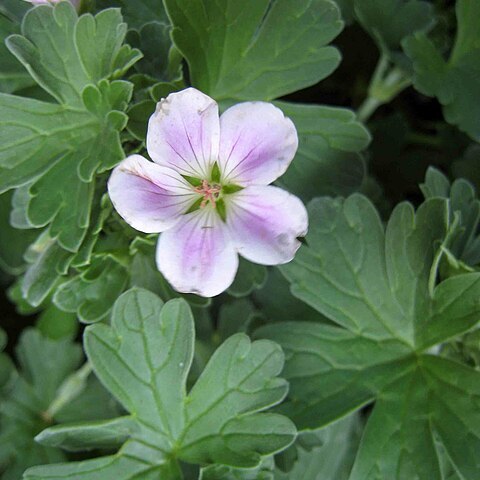Low-growing perennial herb with stout stock and deeply descending taproot, densely clad in silvery hairs in all parts, forming compact rosettes. Stems rather stout, branching, often producing arched runners that root and produce off-set plants. Radical lvs on slender petioles up to ± 20 cm. long; stipules broad-ovate, cuspidate. Lamina (15)-20-50-(80) mm. diam., suborbicular in outline, 5-7-lobed to c. halfway; lobes cuneate, toothed or again lobed; silky-hairy on both surfaces. Cauline lvs smaller, teeth narrower. Fls solitary, 20-25 mm. diam., on peduncles up to ± 10 cm. long; bracts narrow-lanceolate, subacuminate. Sepals c. 8 mm. long, broad-ovate, cuspidate; petals white or pink, broad-ovate to obovate-oblong, shortly clawed c. 12 × 10 mm. Carpels silky-hairy ± 6 mm. long, including beak; seeds finely reticulate.

